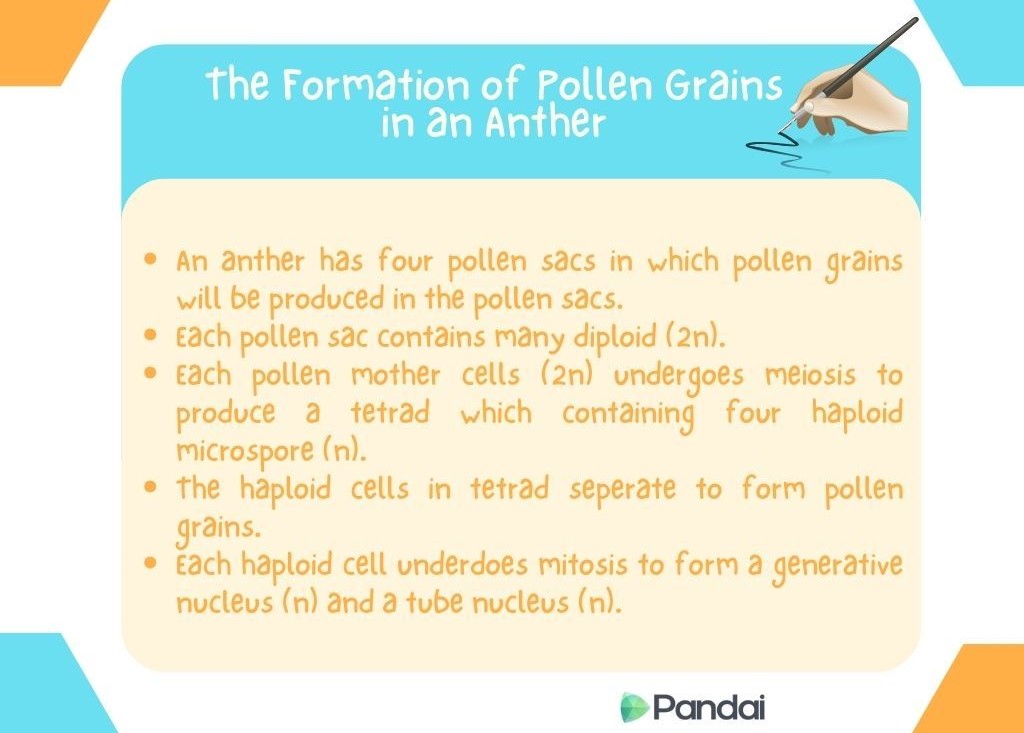| |
| 6.2 |
Development of Pollen Grains and Embryo Sac |
|
| |
 |
| |
| The Importance of Rough Surface of the Pollen |
| Helps it to stick easily to the stigma and pollinating agents. |
|
| |
| The Structure of Ovule |
- Ovules are structures of a flower formed inside the carpel.
- Ovules develop from a layer of tissues inside the ovary.
- A single ovary may contain one or more ovules.
- The ovule attaches to the ovary wall through a stalk called the funicle.
- The area of attachment of the funicle to the ovary is called the placenta.
- The placenta supplies nutrients to the ovule through the funicle.
- A mass of tissues inside the ovary develops forming a lump called nucellus.
- The nucellus consists of parenchyma tissue.
- The nucellus tissue develops into two layers called the integument.
- At the end of the integument, there is a little opening, called the micropyle which allows the entry of air and water into the seed during germination.
- One of the nucellus cells is the megaspore mother cell or also known as the embryo sac mother cell which will develop to form an embryo sac.
|
|
| |
| Process of Embryo Sac Formation |
- Ovule is formed in the ovum.
- Each ovule contains one embryo sac (2n).
- The embryo sac mother cells (2n) undergoes mitosis to form four haploid megaspore cells (n).
- Three megaspores degenerated and remaining one.
- The remaining megaspore undergoes mitosis three times to form haploid embryo sac cells with eight nuclei.
- Three cells move to one and near to micropyle, forming two synergid cells and one egg cell.
- Three more cells move to another end to form three antipodal cells.
- One cell with two nuclei located at the center to form polar nuclei.
- The structure formed is known as embryo sac which is protected by integument.
|
|
| |